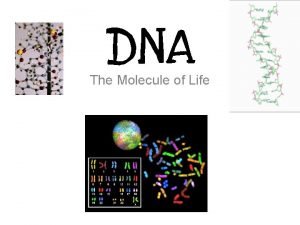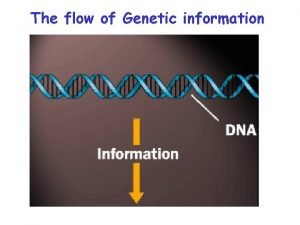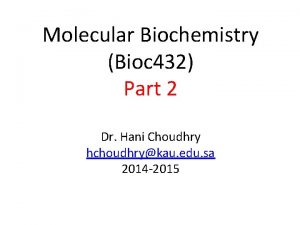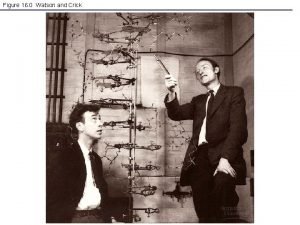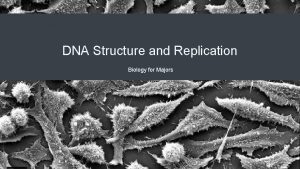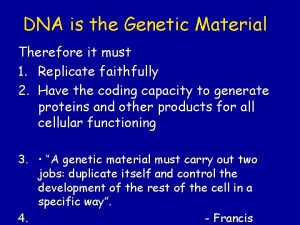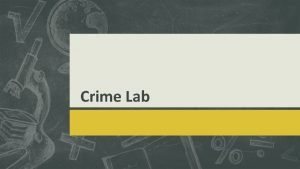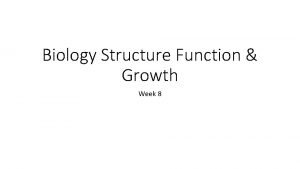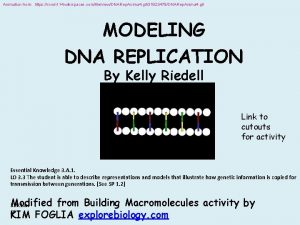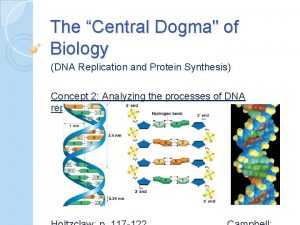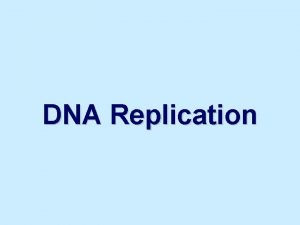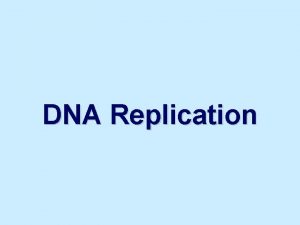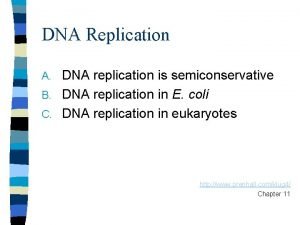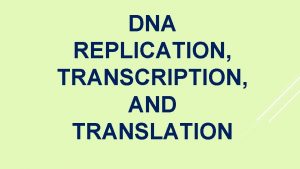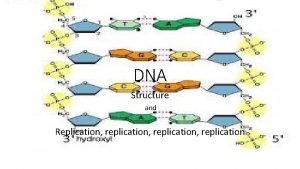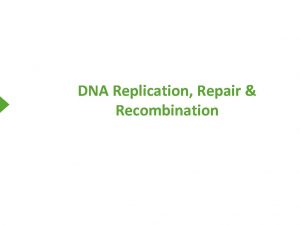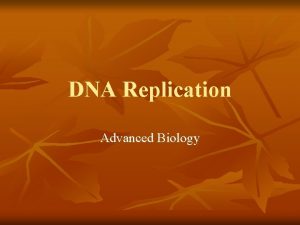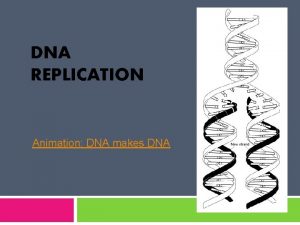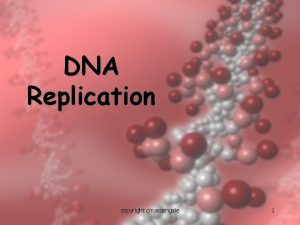REPLICATION How do we get more DNA Definition




















- Slides: 20

REPLICATION: How do we get more DNA?

Definition: n The process of synthesizing a new strand of DNA.

When does it happen? During the ‘S’ (synthesis) phase of the cell cycle.

STEPS: n 1. Double Helix unwinds and unzips. The enzyme is called: n helicase.

HELICASE: an enzymes that breaks the hydrogen bonds between the base pairs. Result: DNA molecule separates into two nucleotide strands, single stranded DNA.

As the double helix unwinds we get the “replication fork”:

STEPS: 2. Pairing of new nucleotides to old nucleotides.

DNA POLYMERASES are enzymes that move along each strand, adding free-floating nucleotides to the exposed bases according to complementary matching. The original DNA strand acts as a “template”

The new nucleotides are added in the “replication fork”

Both sides of the replication fork are adding nucleotides at the same time.

Replication is considered “semi-conservative” each DNA Molecule contains 1 strand from the old DNA and one strand of the new DNA.

STEPS: 3. Linkage of the sugar/phosphate backbone The phosphate and sugars of each nucleotide bond to complete the sides of the ladders. Is this semi-conservative?

The bases bond by H-bonding

STEPS: 4. After 2 new ladders are formed, each ladder twists to form 2 new double helices.

What is this?

What is this?

What is this? What are these parts?

Replication Bubbles DNA is unzipped along many points that grow larger as replication progresses in both directions

We have now gone from one copy of DNA to two!: …. exactly the same as the original!

How is each new molecule related to the original?
 Lirik lagu more more more we praise you
Lirik lagu more more more we praise you More more more i want more more more more we praise you
More more more i want more more more more we praise you Bioflix activity dna replication nucleotide pairing
Bioflix activity dna replication nucleotide pairing Get in get on get off get out
Get in get on get off get out Replication fork
Replication fork Dna and genes chapter 11
Dna and genes chapter 11 Refrain poetic device
Refrain poetic device Haploid vs diploid
Haploid vs diploid Dna meaning
Dna meaning Dna replication is semi-conservative
Dna replication is semi-conservative 5 enzymes responsible for dna replication
5 enzymes responsible for dna replication Polyribosomes
Polyribosomes Multiple choice questions on dna structure and replication
Multiple choice questions on dna structure and replication Major enzymes in dna replication
Major enzymes in dna replication Accgtat
Accgtat Dna jeopardy
Dna jeopardy Dna replication fork
Dna replication fork Missy baker
Missy baker What is this name
What is this name Nucleoside triphosphate in dna replication
Nucleoside triphosphate in dna replication Bioflix dna replication
Bioflix dna replication








